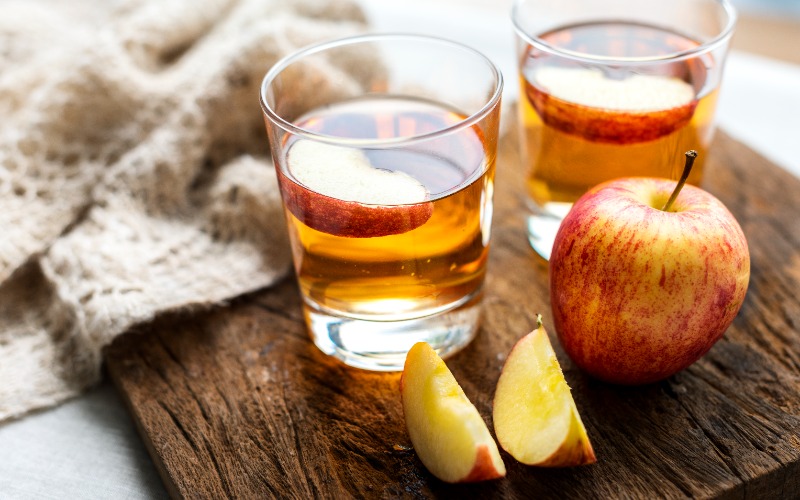When fall rolls around, grocery stores and farm stands brim with products that bring to mind cozy afternoons and crisp autumn air. Among the seasonal staples, apple juice and apple cider are two beverages that spark both debate and confusion. While they both originate from apples, their differences go beyond just their names. Here’s a breakdown of what sets these two drinks apart in the United States.
1. Processing and Appearance
The primary distinction between apple juice and apple cider lies in how they’re processed:
- Apple Cider: In the U.S., apple cider refers to a raw, unfiltered apple drink. Fresh apples are pressed, and the resulting liquid is typically cloudy with bits of pulp and sediment. Because cider is unfiltered, it often has a rich, robust flavor that feels close to eating a fresh apple. It’s also perishable, which means it’s often sold refrigerated.
- Apple Juice: Apple juice, on the other hand, is highly processed. After apples are pressed, the juice is filtered to remove solids, creating a clear, golden liquid. It’s also pasteurized for a longer shelf life and is often sweetened or enhanced with preservatives to maintain consistency in flavor.
2. Flavor Profile
The taste of apple cider and apple juice varies significantly:
- Cider retains a more natural, tart flavor because it’s less processed. Depending on the variety of apples used, cider can taste sweet, tangy, or even a little bitter.
- Juice has a sweeter, more uniform flavor, often due to added sugars or concentrates. It lacks the tangy complexity that makes cider a quintessential fall favorite.
3. Alcohol Content
In many parts of the world, “cider” refers to an alcoholic beverage. In the U.S., however, apple cider is generally non-alcoholic.
That said, traditional alcoholic cider (also called hard cider) is gaining popularity in the U.S., but it’s distinctly labeled as such. Non-alcoholic apple cider can be fermented to produce hard cider, but the term “apple cider” by itself usually means the fresh, non-alcoholic version.
4. Seasonal Availability
Cider is often considered a seasonal product. It’s most popular in the fall and winter when fresh apple harvests provide the raw materials for this unfiltered drink. Apple juice, with its longer shelf life, is available year-round and doesn’t rely on seasonal apple crops.
5. Health and Nutrition
Nutritionally, apple cider and apple juice are similar, but there are subtle differences:
- Cider may contain more natural nutrients, as it undergoes minimal processing and retains some of the apple’s pulp and fiber. However, it’s also more prone to spoilage due to its unpasteurized state.
- Juice is lower in fiber due to filtration but often contains added vitamins or fortification. The higher sugar content, particularly in sweetened varieties, may make it less appealing to those watching their sugar intake.
6. How They’re Enjoyed
The ways people enjoy cider and juice differ, too:
- Apple Cider is versatile, often served warm with spices (think cinnamon and cloves) as a comforting fall drink, or cold for a refreshing burst of flavor.
- Apple Juice is more commonly served chilled as a simple, everyday beverage. It’s a staple in children’s lunchboxes and a go-to mixer for cocktails.
Legal Definitions and Regional Variations
While there are general differences between apple cider and apple juice, the terminology can vary regionally. In some parts of the U.S., cider may refer to any non-alcoholic apple beverage, including the clear, pasteurized kind that resembles juice. However, many local cider mills and farms adhere to the traditional distinction, promoting their cider as raw and unfiltered.
Which Should You Choose?
If you crave something fresh, tangy, and reminiscent of an apple plucked straight from the tree, opt for apple cider. For a more polished, sweet, and shelf-stable drink, apple juice might be your go-to. Either way, both beverages capture the essence of apples in their own unique ways.
So the next time you reach for a bottle, take a moment to consider the subtle—and not-so-subtle—differences. Whether you’re sipping cider by a roaring fire or cooling off with a glass of juice, both drinks offer a taste of the apple’s enduring charm.











